Complete Solutions to Exercise1.7 of chapter GEOMETRICAL OPTICS of Class 12 book with complete answers and questions
| Class 12 | PHYSICS |
| Chapter | GEOMETRICAL OPTICS |
| CENGAGE PHYSICS | Exercise1.7 |
| Number Of Questions | 21 |
| Academic Year | 2023-24 |
In Figure. , find the position of final image formed.
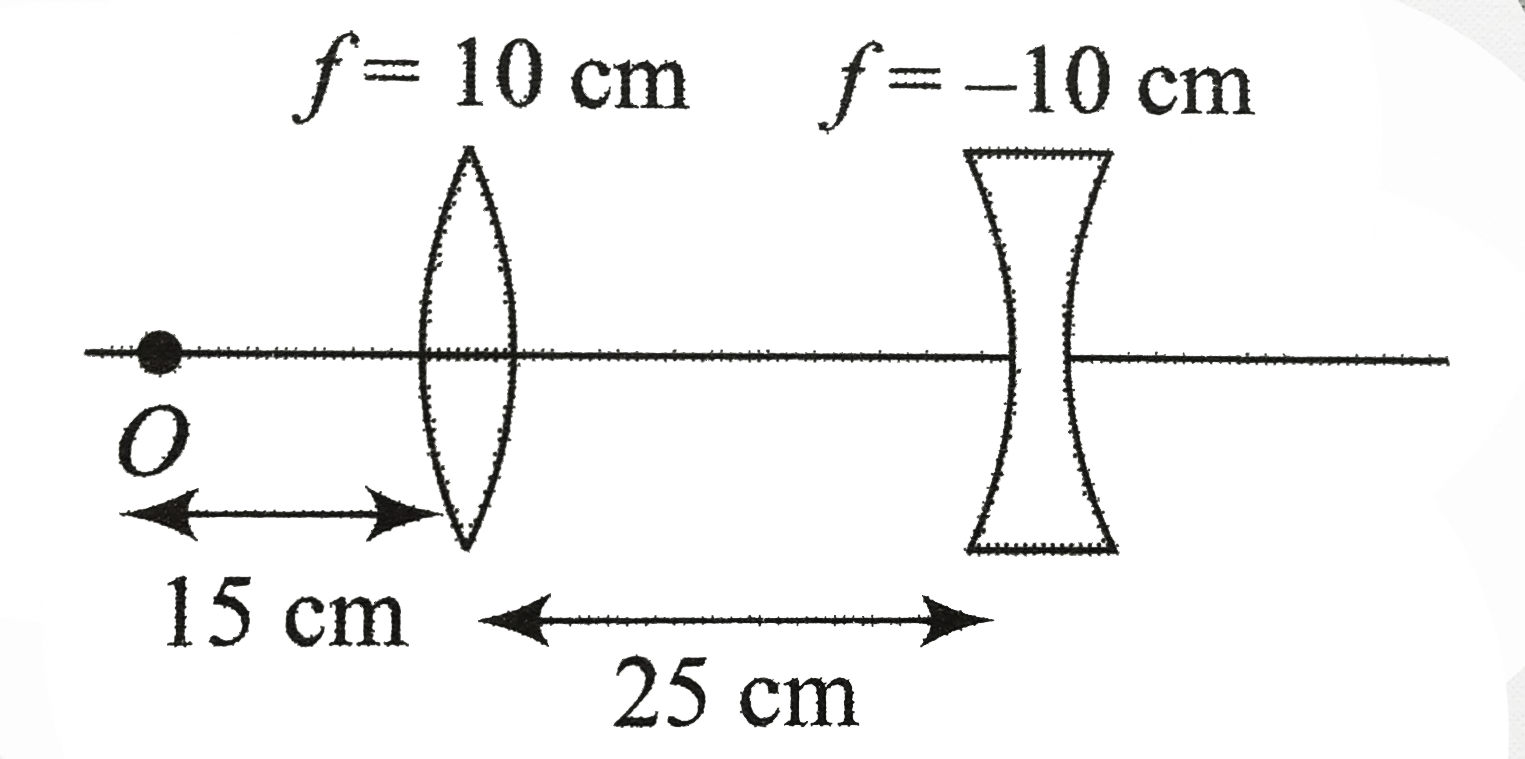
View SolutionFigure, shown two converging lenses. Incident rays are parallel to the principal axis. What should be the value of d so that final rays are also parallel?
Here, the diameter of ray beam become wider.
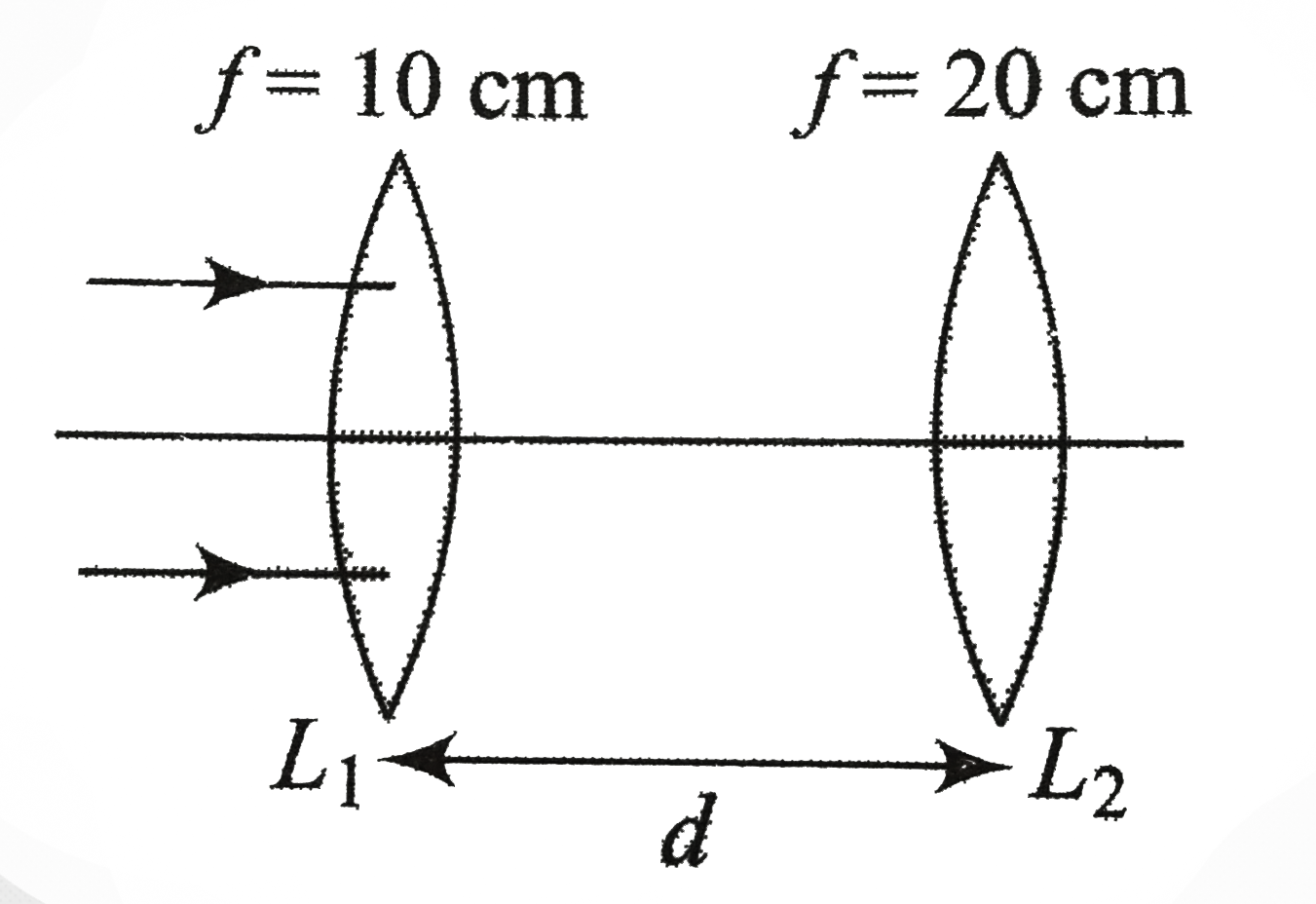
View SolutionIn Figure., find the position of final image formed.
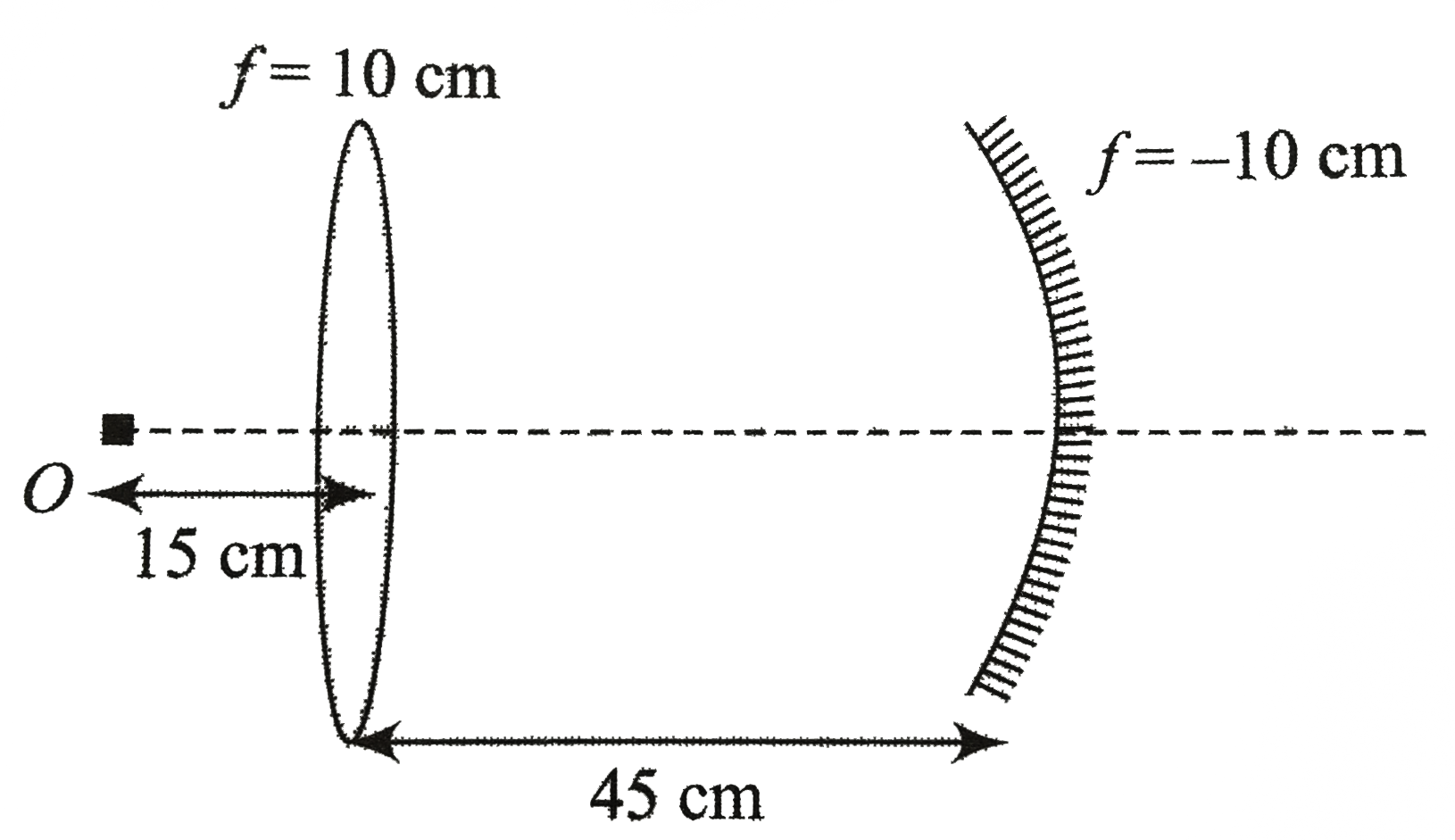
View SolutionIn Fig. what should be the value of d so that image is formed on the object itself .
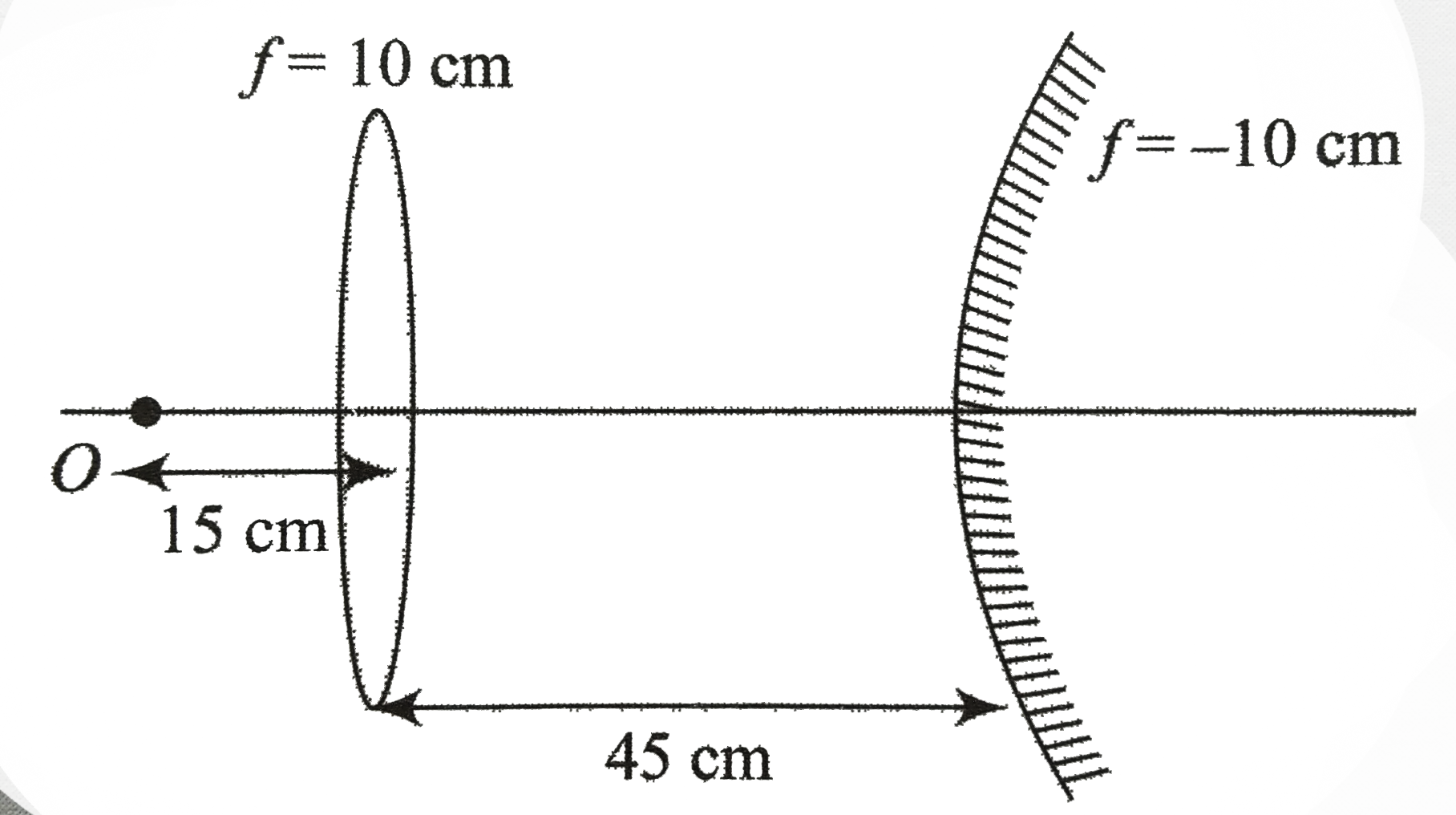
View SolutionIn Fig,, if the image of object O has to coincide with itself, then where must the object be placed at a distance from the lens?
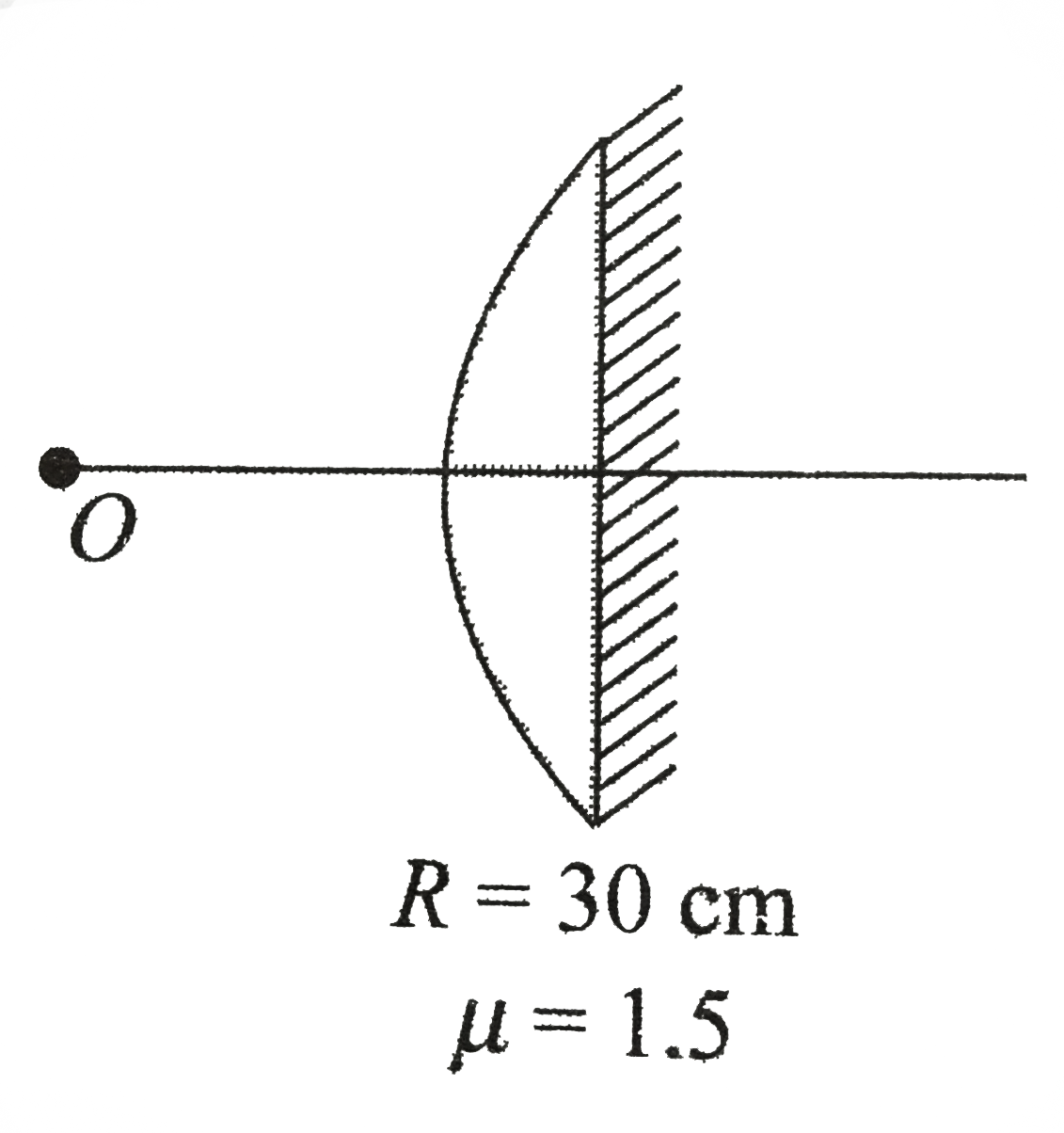
View SolutionA convex lens of focal length 20cm is placed 10cm away from a second convex lens of focal length 25 cm. What wil be the location of the image of an object at 30 cm in front of the first lens?
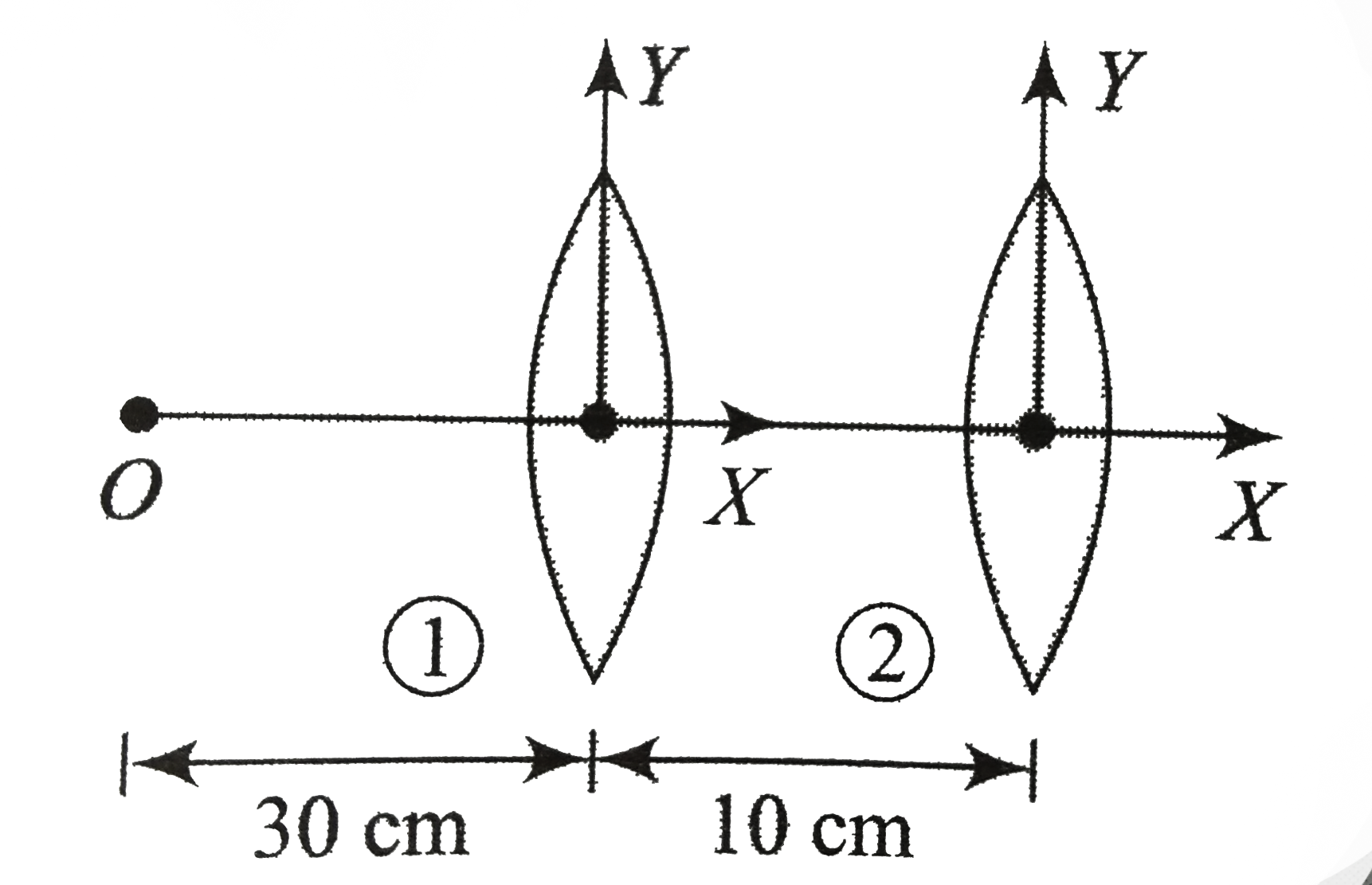
View SolutionWhen an object is placed at the proper distance ot the left of a converging lens, the image is focused in a screen 30 cm to the right of lens. A dieverging lens is now placed 15 cm to the right of the converging lens and it is found that the screen must be moved `19.2cm` farther to the right to obtain a sharp image. Find the focal length of the diverging lens.
View SolutionA telephoto combination consists of convex lens of focal length 30cm and a concave lens of focal length 15cm, the separation between two lens is 27.5cm. Where should be the photographic plate placed in order to photograph an object 10m in front of the first lens?
View SolutionA convex lens is cut in half along its principal axis and the two halves are separated by a distance of 12cm. An object is placed 6cm in front of the lens as shown in Figure., Two sharp images are formed on the screen placed 80cm from the oject. What is the focal length of the lens?
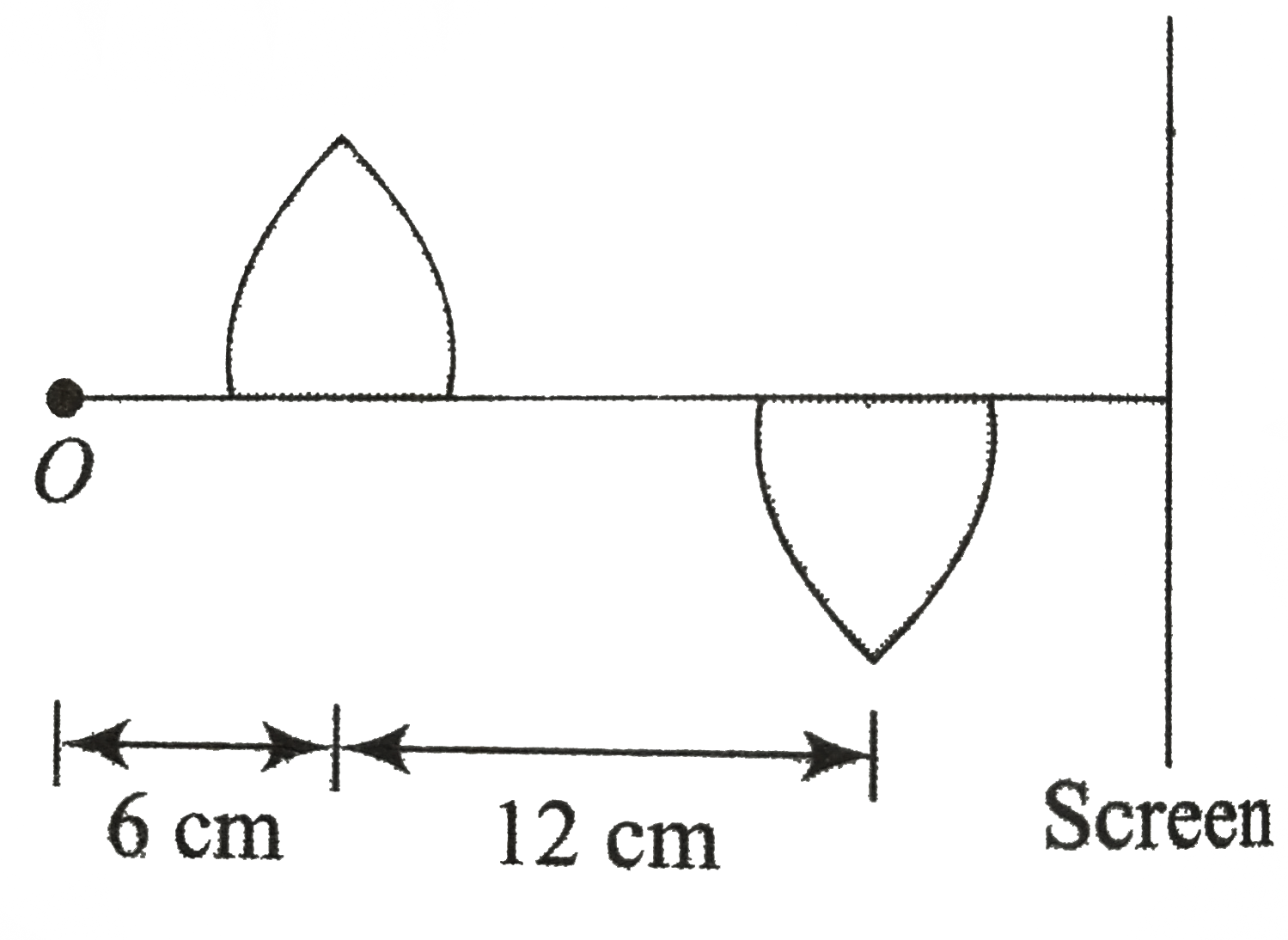
View SolutionA plano-convex lens is silvered on its plane side. The radius of curvature of the other face is 12cm and the refractive index of the material of the lens is 1.5. An object is placed 24 cm in front of the silvered lens. Where will the image be formed?
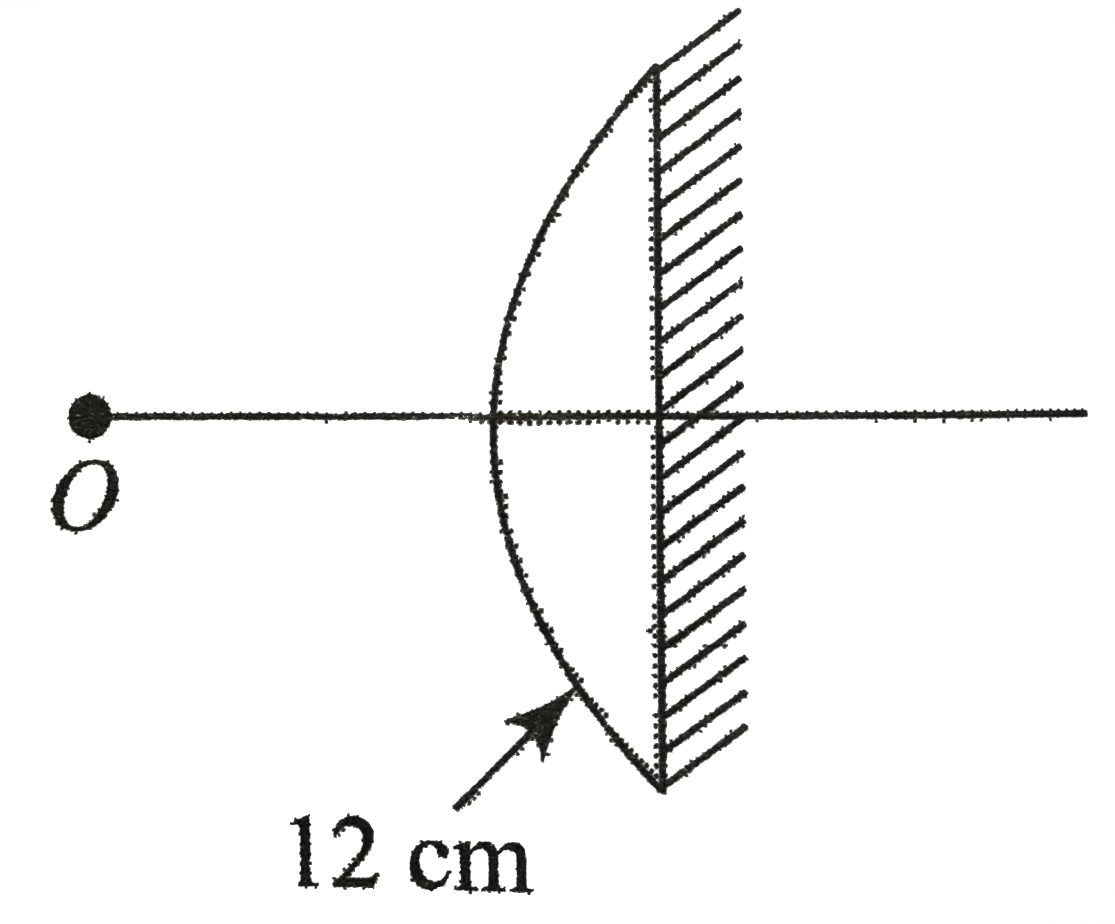
View SolutionA convex lens of focal length 10cm is placed 30 cm in front of a second convex lens also of th esame focal length. A plane mirror is placed after the two lenses. Where should a point object be placed in front of the first lens so that it imagees on to itself?
View SolutionA concave mirror of focal length 30 cm is placed on the flat horizontal surface with its concave side up. Water with refractive index 1.33 is poured into the lens. Where should an object be placed if its image is to be captured on a screen with a magnification of 2?
View SolutionThe convex side of a thin concavo-convex lens of glass of refractive index 1.5 has a radius of curvature of 20cm. The concave surface has a radius of curvature of 60cm. What is the focal length of the lens? The convex side is silvered and placed on a horizontal surface. What is the effective focal length of the silvered lens? The concave part is filled with water with refractive index 1.33. What is the effective focal length of the combined glass and water lens? If the convex side is silvered what is the new effective focal length of the silvered compound lens?
View SolutionThe source is placed 30 cm from a convex lens which has a focal length of 20cm. The source is initially located on the axis of the lens. The lens is then cut into two halves in a plane along the principal axis. The two halves are separated by a distance of 4mm. What will be the locations of the image of the source?
View SolutionIf final image after two refractions through the lens and one reflection from the mirror forms at the same point O. Refrative index of the material of the lens `mu=3//2`. Then find d.
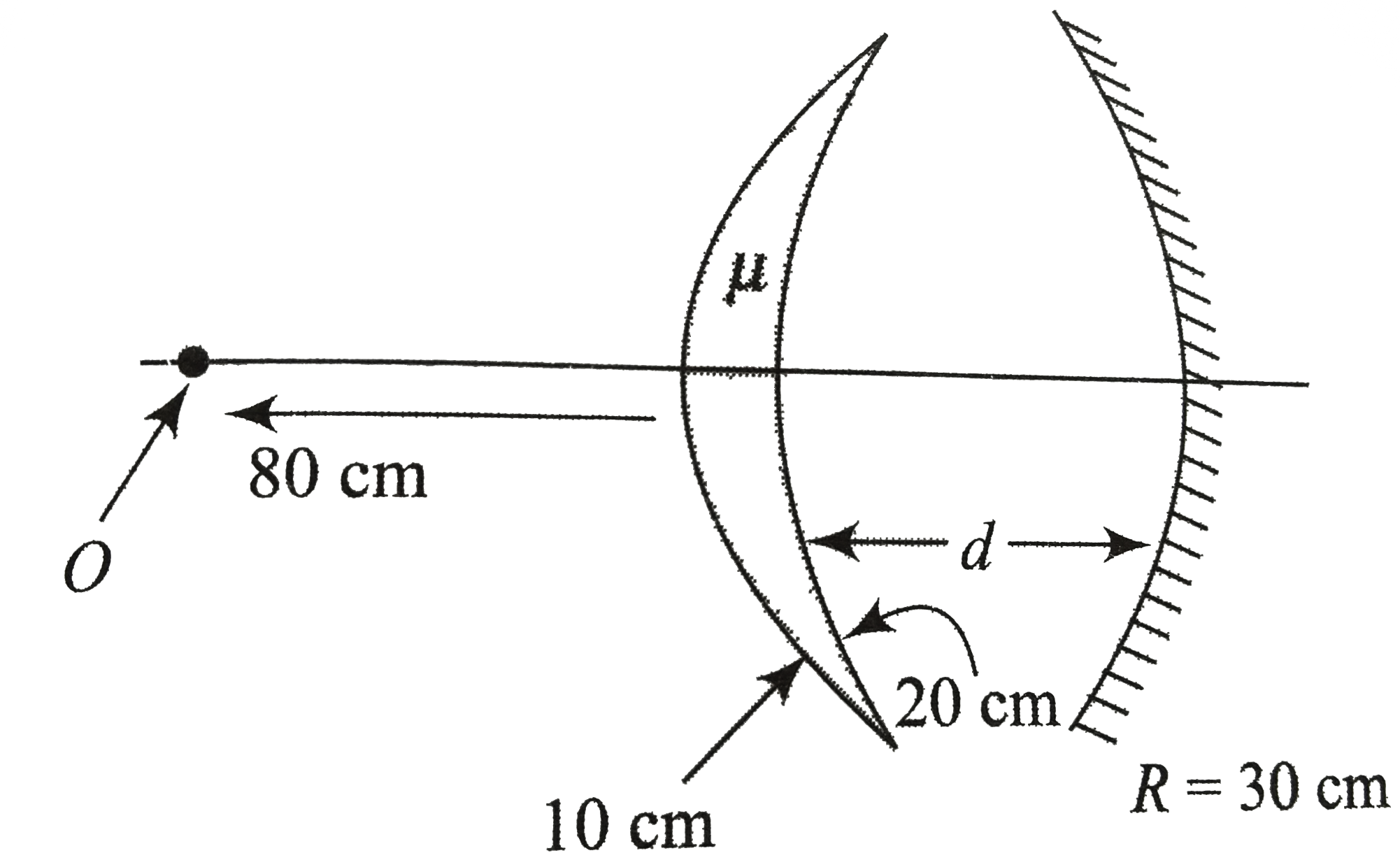
View SolutionPoint object O is placed at a distance of 20cm from a convex lens of focal length 10cm as shown in Figure., At what distance x from the lens should a concave mirror of focal length 60cm, be placed so that the final image coincides with the object?
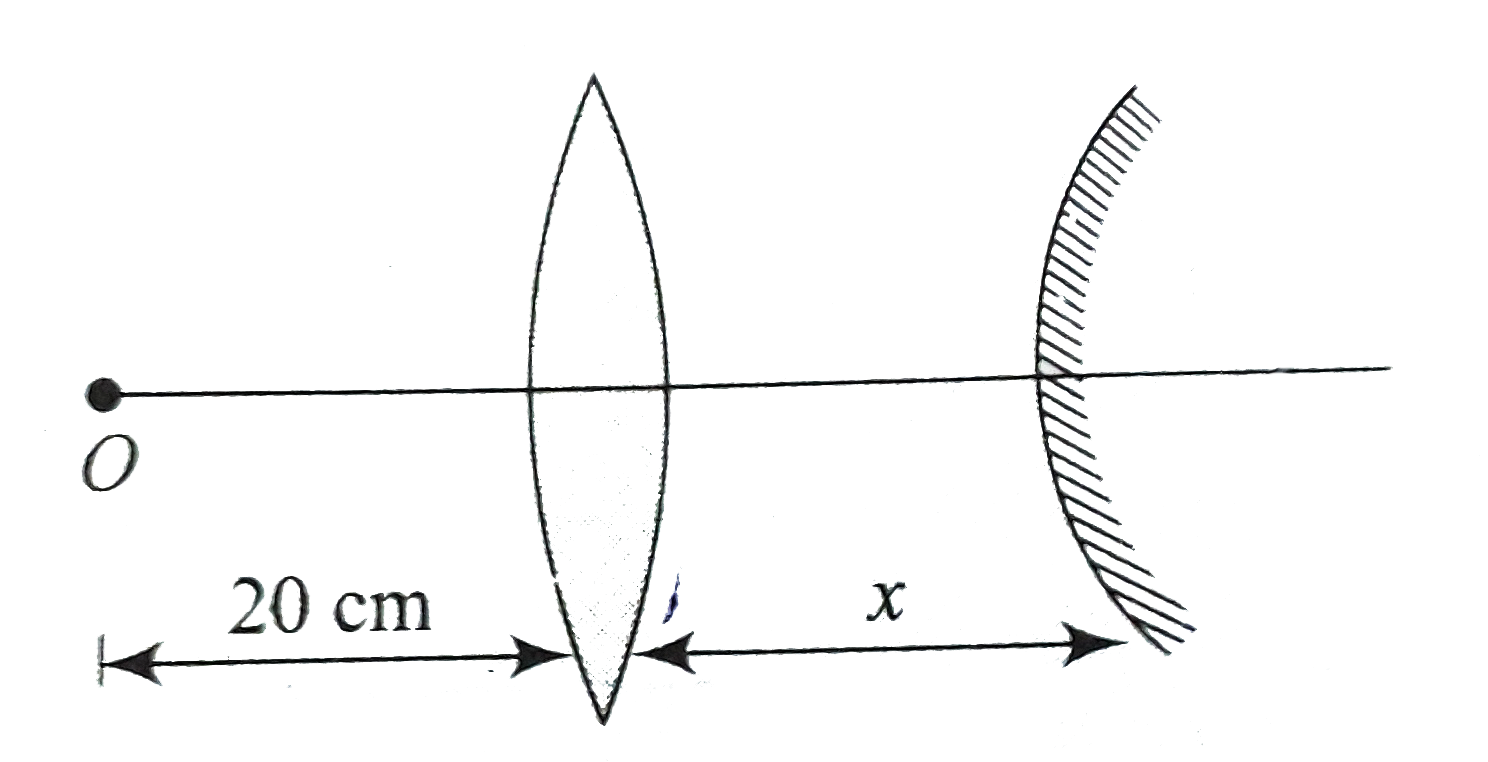
View SolutionThe focal length of a thin convex-lens is 30cm. At a distance of 10 cm from the lens there is a plane refracting surface fo refractive inidex `3//2` Where will parallel rays incident on lens converge?
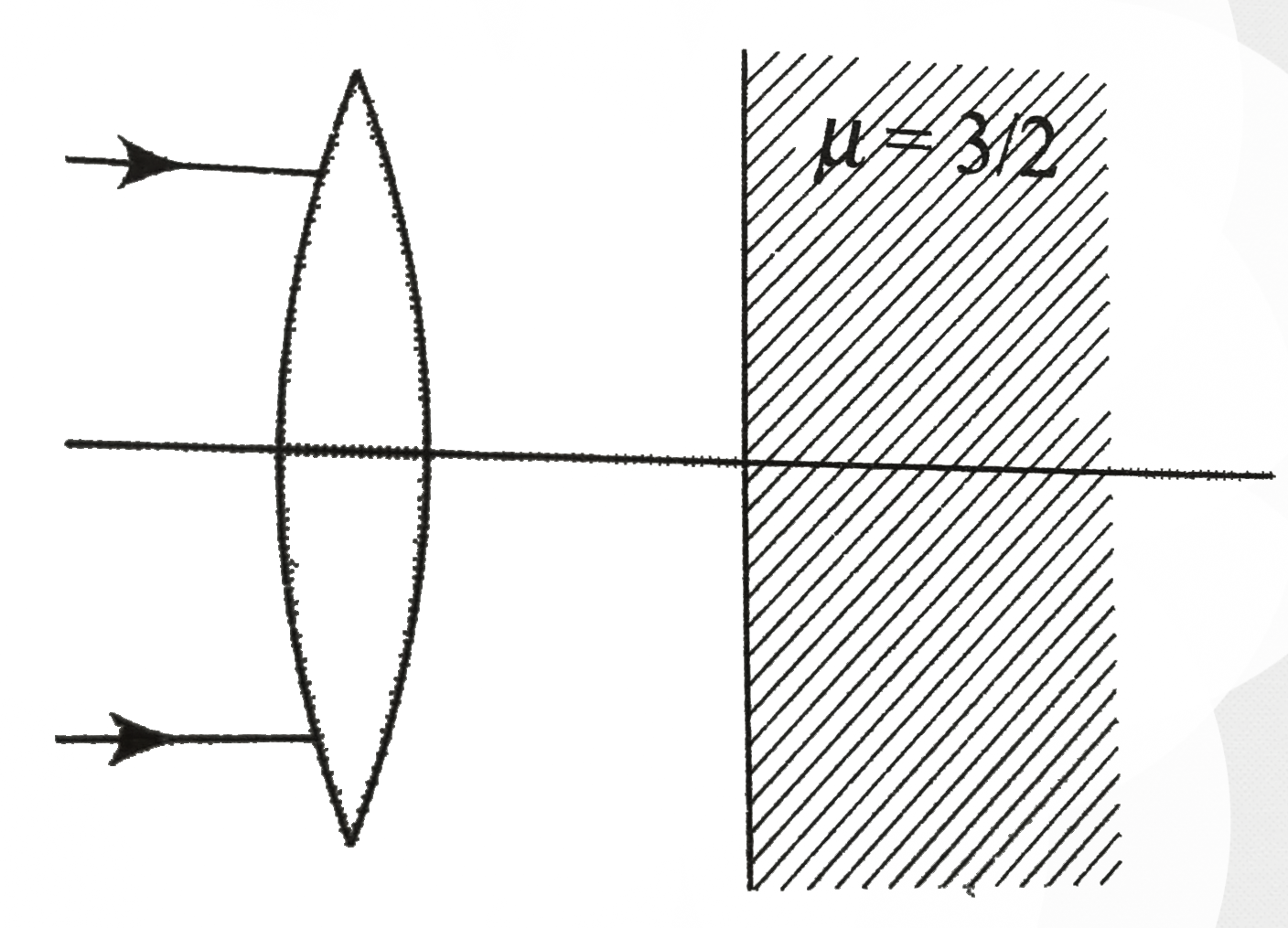
View SolutionA plano-convex glass lens `(mu_(g)=3//2)` of radius of curvature` R=10cm` is placed at a distance of b from a concave lens of focal length 20cm. What should be the distance a of point object O from the plano-convex lens so that position of final image is independent of b?
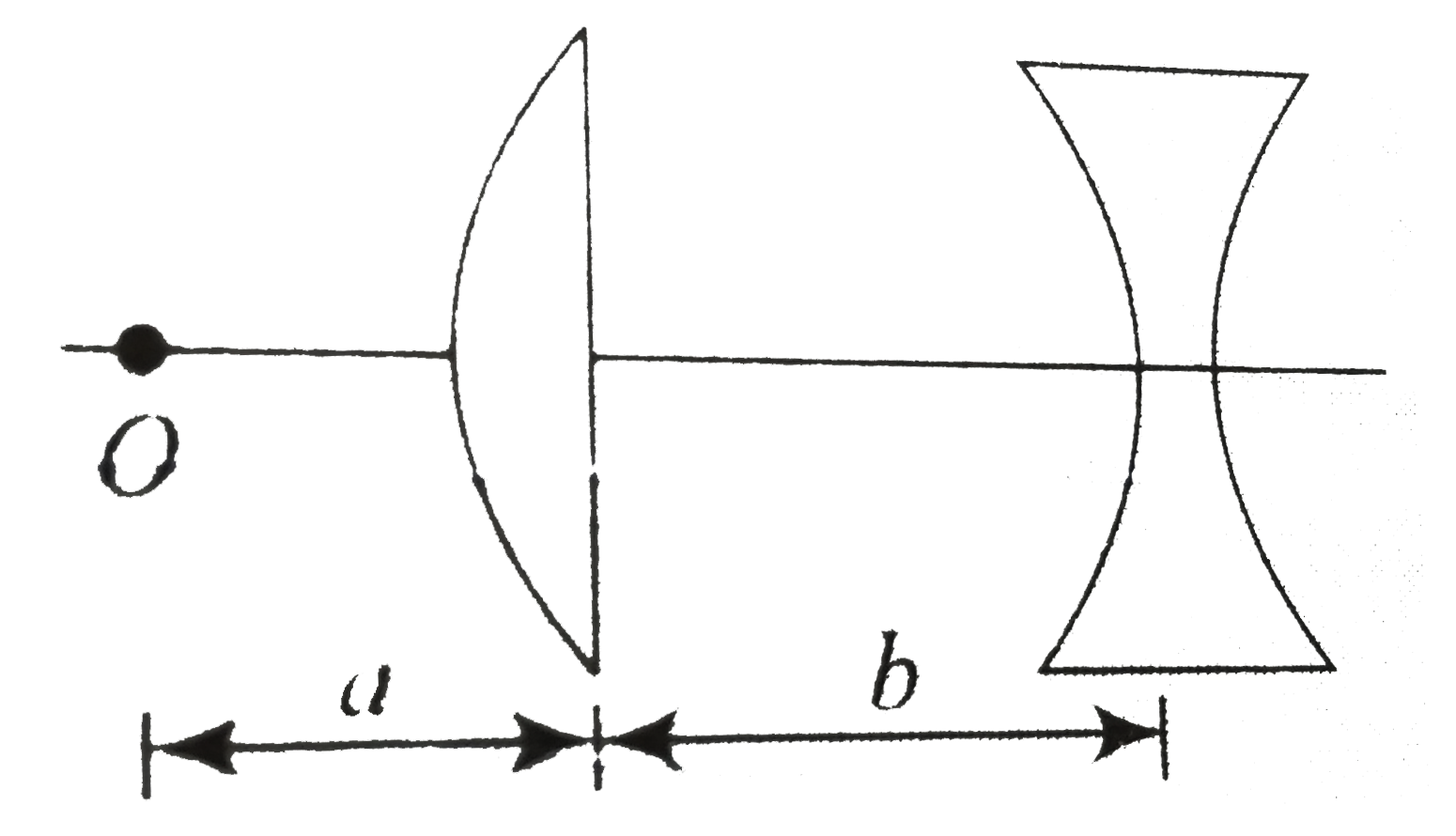
View SolutionOn a horizontal plane mirror, a thin equiconvex lens of glass is placed and when the space between the lens and mirror is filled with a liquid, an object held at a distance D which is 30cm vertically above the lens is found to coincide with its own image as shown in Figure. If equiconvex lens of glass has refractive index `mu=1.5` and radius of curvature `R=20cm` then find refractive index of the liquid.
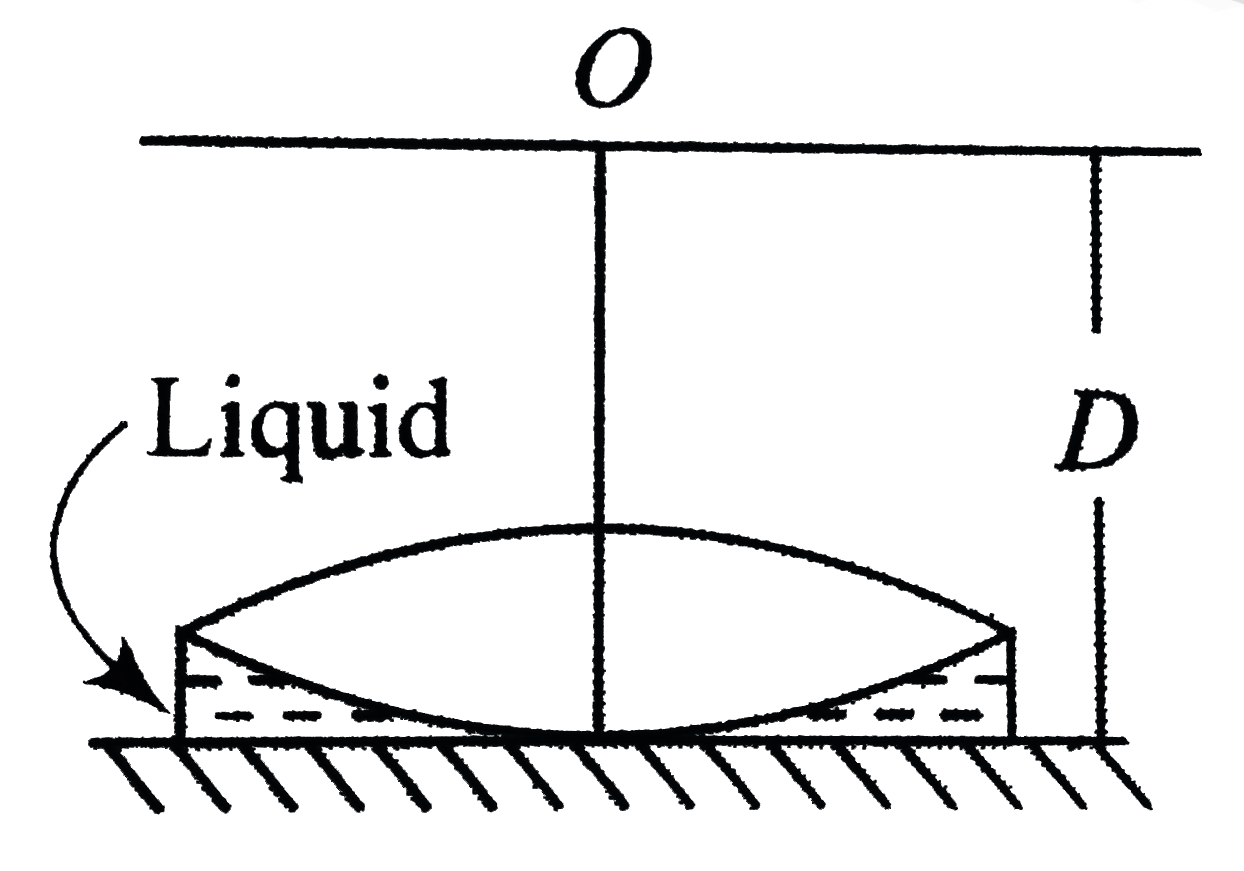
View SolutionA pin is placed 10cm in front of a convex lens of focal length 20cm, made of a material having refractive index 1.5 . The surface of lens farther away from the pin is silvered and has a radius of curvature 22cm. Determine the position of the final image. Is the image real or virtual?

View SolutionA convex lens of glass `(mu=1.5)` is formed by combining two surfaces of radii `R_(1)=60 cm` and `R_(2)=30cm` . It is cut into two parts in two different ways as shown in Figure .
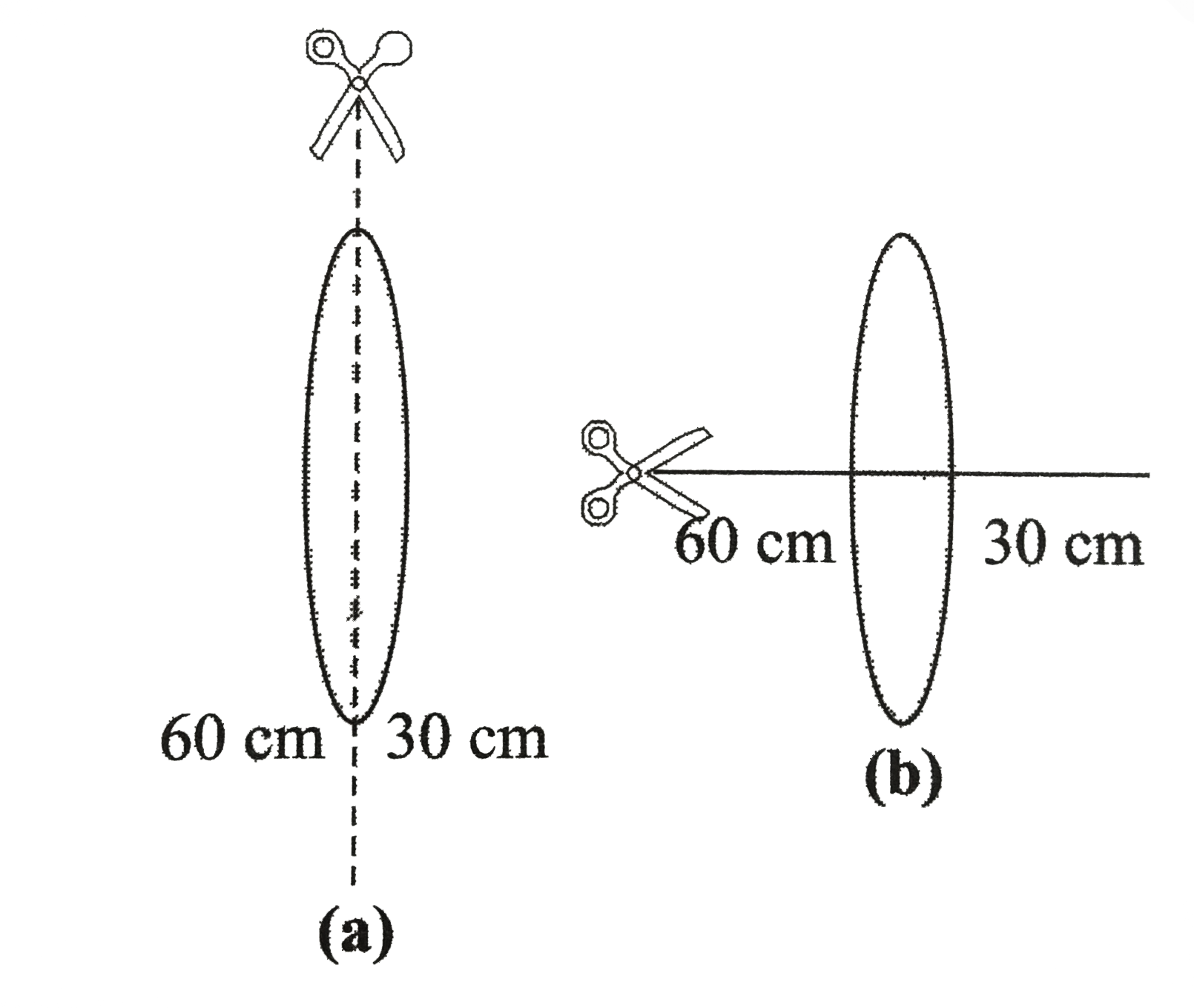
Find:
a. the focal length of the lens.
b. in figure (a), the focal length of left portion and that of the right portion.
c. in figure (b), the focal length of the upper part and that of the lower part.
View Solution
Exercise1.7 questions and complete solutions for chapter GEOMETRICAL OPTICS of CENGAGE PHYSICS (HINGLISH) of Class 12